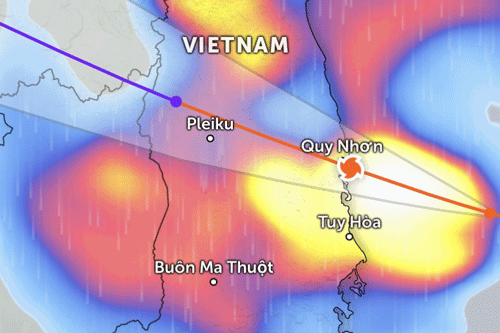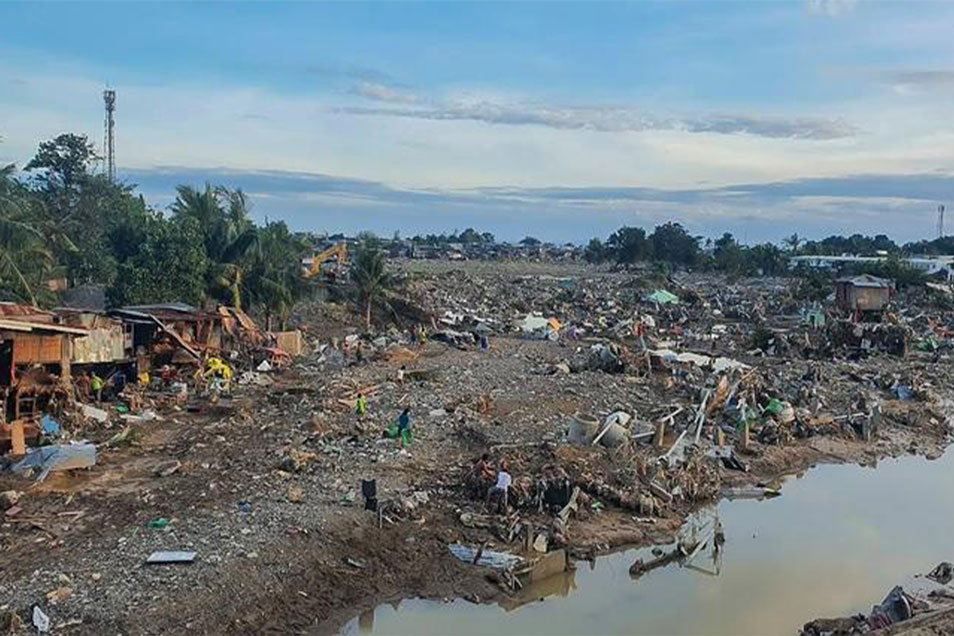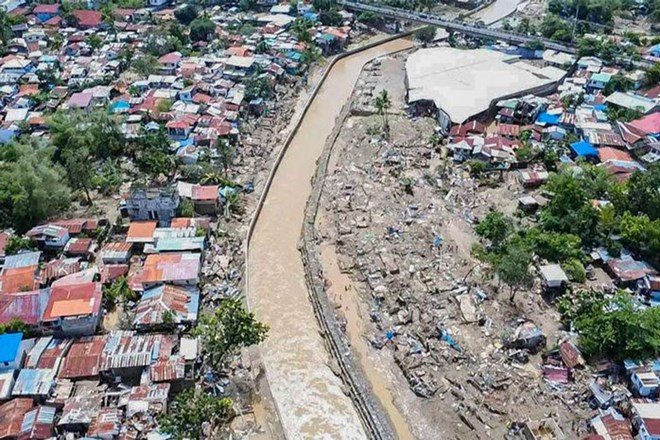On November 7, scientists warned that extreme weather events such as Typhoon No. 13 Kalmaegi will only become more frequent as global temperatures rise.
Typhoon Kalmaegi has killed at least 188 people across the Philippines and caused extensive damage to infrastructure and agricultural land. The storm then destroyed homes and uprooted trees after making landfall in central Vietnam on November 6.
The devastation comes at a time when delegates from more than 190 countries are gathering in Brazil for the latest global climate talks. Researchers say the world's failure to control greenhouse gases has led to more intense storms.
Experts explain that sea surface temperatures in both the Northwest Pacific and the East Sea are "specifically rising". This is like fueling storms.

Gianmarco Mengaldo, a researcher at the National University of Singapore, explained that climate change increases storm intensity mainly by warming the ocean surface and increasing atmospheric moisture. Scientists say the trend is clearly linked to human-caused global warming.
Scientific data shows that tropical cyclones may not become more frequent, but they are certainly becoming more intense. Last year, the Philippines suffered 6 deadly super typhoons in just 1 month. In a rare development last November, four tropical cyclones developed at the same time, suggesting that storms may be taking place in more numbers.
"Even if the total number of annual storms does not increase dramatically, the closeness of seasons and their potential impact can increase," said Drubajyoti Samanta, a climate scientist at Nanyang University of Technology in Singapore. Kalmaegi is a clear reminder of that emerging risk model."


One of the most emerging and dangerous risks is the phenomenon of "storm overlapping". Mr. Feng Xiangbo, a hurricane researcher at the University of Reading in the UK, explained that the disastrous damage caused by Typhoon Kalmaegi was partly due to its appearance right after other extreme weather in the region. Consecutive storms can cause more damage than the total of individual storms combined.
The reason is because the soil is saturated, the riverbed is full and the infrastructure has been weakened by previous storms. At this important time, even a weak storm can act as a "outbreak point", causing catastrophic damage.
Scientists also warn that more coastal areas may be at risk as storms form in new areas, follow other trajectories and become more intense. This, combined with rising sea levels, poses a serious threat to low-lying areas, especially in the Philippines and along the coastal rural continental shelf of Vietnam.











